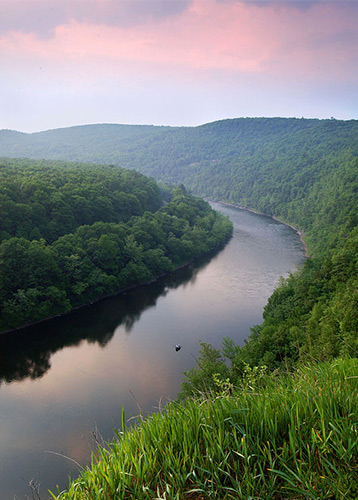Edgemoor Port Expansion — Incl 13 fans spinning in the River
Help Oppose the Edgemoor Port Expansion that Includes 13 Fans Operating on the Riverbed Threatening Water Quality and Fish
Diamond State Port Corporation is asking the US Army Corps of Engineers and the State of Delaware to approve their new port expansion at the old Dupont Chemours Edgemoor manufacturing facility along the the Delaware River in New Castle County, DE in order to create a multi-use containerized cargo port to service deep draft vessels.
The project includes dredging and deepening to create a new 45 foot deep access channel from the main navigation channel to the port facility resulting in 3,325,000 cubic yards (cy) of dredged spoils for disposal. Maintenance dredging will result in an additional 500,000 cy of dredge spoils annually. 10% of the spoils would be used for fill onsite or other purposes, the rest would be disposed of in Army Corps confined disposal facilities (CDFs) including Wilmington Harbor North, Wilmington Harbor South, Reedy Point North and Reedy Point South.
The project includes construction of a ~2600-foot long, pile-supported wharf and steel sheet pile retaining wall (bulkhead) along the landward side of the wharf structure. Construction of the bulkhead will require the discharge of fill material into 5.5 acres of river bottom. The wharf will be supported by 4500 twenty-inch diameter steel pipe pilings filled with concrete.
The project includes installation and operation of 13 fans in the River that pose a risk to aquatic species including the impingement or entrainment of fish, eggs or larvae, and/or the blowing of sediment that threatens to smother river bottom habitats, sessile species or cause sediment plumes in the water column that could choke or displace fish. The 13 fans would be placed every 200 feet along the riverfront face of the wharf. Each fan would be used to blow sediment from approximately 160 feet of riverbed in an effort to reduce the volume of maintenance dredging required for the project. The fans will operate by drawing water into the top of a 48-inch diameter “J-shaped” tube, passed through a hydraulically powered pump impellor, that is then discharged as a jet along the bottom of the River. The fans will rotate at speeds on the order of 275 revolutions per minute. The fans will include a 4-inch screen at their larger intake end and an open space of 1.5 feet between the blades. The fans will direct the discharge jet in the direction of tidal current flow. Each fan will run 4 times a day for 30 minutes (twice during the flood tide and twice during the ebb).
Previous proposals to use similar fans were opposed by fishery experts due to the serious threat to aquatic life and were withdrawn before a final decision was made. There is particular concern about the federal endangered sturgeon of the River and Striped Bass.
Fishery experts, and the Delaware Riverkeeper Network are tremendously concerned about the sediment plume blown out by the fans smothering river bottom habitats, potentially smothering sessile critters laying on the river floor, impinging fish, eggs or larvae on the intake screens or entraining (cutting up) fish, eggs and larvae that will be drawn into and through the fans and their blades. There are also concerns about the impact of the sediment plume on fish and water quality – potential choking from the plume of sediment or forcing fish to redirect their movements in reaction to the plume in ways that could impact them.
The Army Corps initially only provided 30 days, during a pandemic and the month of August to comment. Many of you responded to our call to urge the Army Corps to give more time to comment. While they did so after the original comment period had expired, in the end the Army Corps did give more time to comment. Delaware Riverkeeper Network is working to secure information and documentation on the project so we can put together informed comments for the Army Corps record. You can find our initial comment to the Army Corps here.
In addition, on August 23rd, the state of Delaware issued its public notice for the project, providing easily accesible documents online, scheduling a public hearing for the evening of September 29 at 6 pm, and providing a comment period that will extend until November 1. You can find DNREC's information online at this link.
And we have already achieved a big success. While orignally the Delaware River Basin Commission had proposed passage of a resolution that the Commission’s review of the Port of Wilmington Edgemoor Expansion project for consistency with the Comprehensive Plan may be accomplished largely within the context of the coordinated permit processes led by the Delaware Department of Natural Resources and Environmental Control and the U.S. Army Corps of Engineers” -- essentially watering down DRBC's own decisionmaking authority, its comment process, and the need for a DRBC docket -- the Delaware Riverkeeper Network urged the Commissioners at their August 2020 public hearing to vote no on this resolution and instead commit to undertaking its own independent review of this project. SUCCESS! On September 10, the DRBC Commissioners pulled the resolution from the proposed agenda for a vote and instead committed to maintaining its full authority, review process and need for a DRBC docket.
UPDATE 2022-07-21: Delaware Riverkeeper Network sent a 60-day notice of intent to sue the National Marine Fisheries Service (NMFS) for violating the Endangered Species Act. These violations concern the Biological Opinions issued to the Army Corps of Engineers for the New Jersey Wind Port project and the Edgemoor Container Port project. If permitted by the Army Corps, these commercial ports could threaten the continued existence of the Delaware River Estuary’s genetically unique population of Atlantic sturgeon. According to the notice, if these projects move forward, the increase in ship traffic within the estuary will increase sturgeon deaths due to vessel strike, which could threaten the survival of the Delaware River Atlantic Sturgeon.




